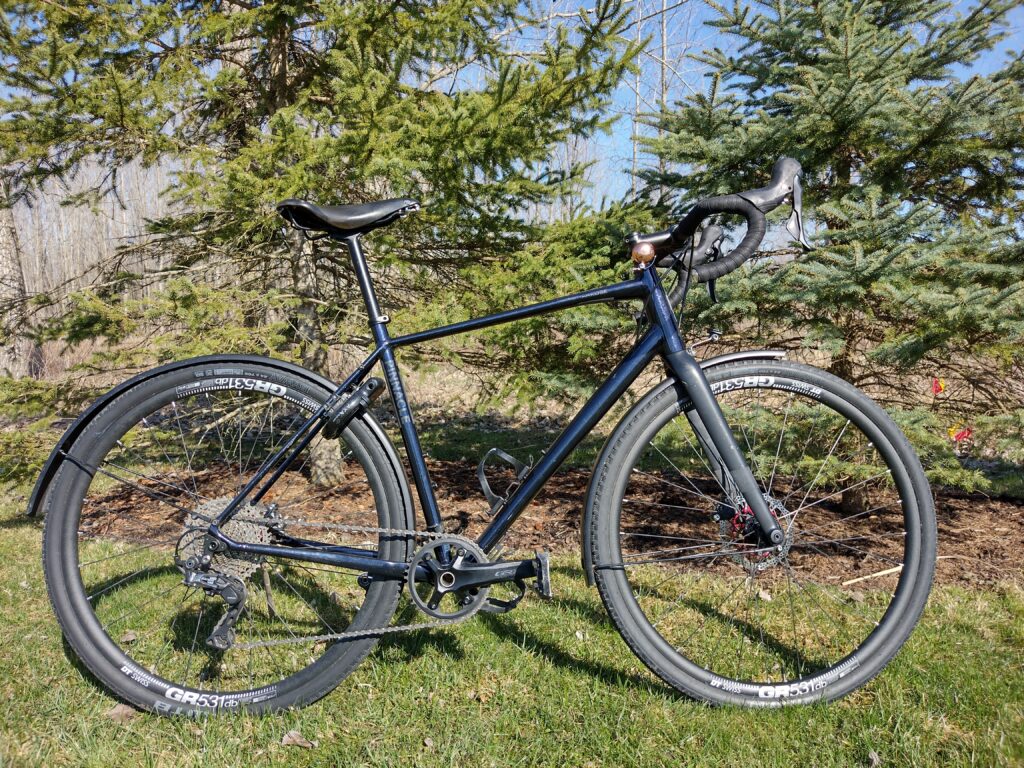
Note: As of Summer 2023 I have sold this bike and replaced it with an All-City Gorilla Monsoon.
This is my gravel bike which I bought from Evans Cycles, a large chain of bike shops in the UK. Pinnacle is Evans Cycles’ in-house bicycle brand and they mostly make very good entry-level bikes but they also have a few mid-range offerings including the fantastic Arkose 4.
The main thing I love about the 2021 Pinnacle Arkose is the way it feels. I am a 178cm tall man with a relatively long ‘cycling inseam‘ of 86cm which means that I typically need a bike frame with a slightly higher stack and shorter reach and this bike fits me like a glove. I previously owned a 2018 Arkose 3 which always felt a little long to me, but starting in 2021 Pinnacle started marketing the Arkose lineup as ‘unisex’ which I suspect means that this bike is a little shorter and higher than the older models. Unfortunately it’s hard to know for sure because for some annoying reason Pinnacle doesn’t publish the exact geometry of their bikes anymore!
This bike is also surprisingly light and very well specced:
Frame: 6061 Aluminum Alloy (Large), 12x142mm Thru Axle
Fork: Carbon, Tapered Steerer
Rear Derailleur: Shimano GRX RD-RX812
Shifters: Shimano GRX ST-RX600
Bottom Bracket: Shimano BB-R60
Crankset: Shimano Shimano RC-RX600 1x 40T
Cassette: Sunrace 11-speed 11-42T
Brake Calipers: Shimano GRX BR-RX400
Brake Discs: A2Z Teppan Yaki SP5 160mm, Red Carrier*
Handlebars: Pinnacle Aluminum 140mm width, 90mm reach, 140mm drop
Stem: Pinnacle Aluminum 95mm
Headset: FSA
Wheelset: RyanBuildsWheels Gravel Bomber 32h w/ DT Swiss GR531db Rims, Bitex MTR12 6-bolt Hubs & Sapim CX-Ray Bladed Spokes*
Rear Tire: WTB Byway 700c x 44mm TCS Fast/Light SG2*
Front Tire: WTB Byway 700c x 44mm TCS Fast/Light SG2*
Saddle: Brooks B17*
Seatpost: Pinnacle Alloy
Other: Zefal Bottle Cages, Axa Defender Ring Lock, SKS Edge AL 56 Mudguards, Crane Mini Suzu Stem Bell*
*denotes that this component is an upgrade
This bike is mostly stock and the component selection is pretty good. The groupset is basically a complete 11-speed Shimano GRX RX600-level groupset which is functionally identical to the higher-tier RX800 series but weighs slightly more. Shimano GRX is currently the go-to groupset for gravel bikes although Sram road groupsets are also sometimes found in this application. The 40 tooth chainring and 11-42 tooth cassette give a gear range of ~26-102 gear inches, which is good for road cycling and shallow gradients but too high for technical off-road ascents. This isn’t the fault of Pinnacle but simply a consequence of the major component manufacturers having not yet caught up with consumer demand. The easiest way to lower the gear range of the bike would be to install an aftermarket Wolf Tooth chainring, which would result in a 24-inch low gear, but as of Spring 2022 a granny gear comperable to that available on a mountain bike requires a mullet drivetrain.
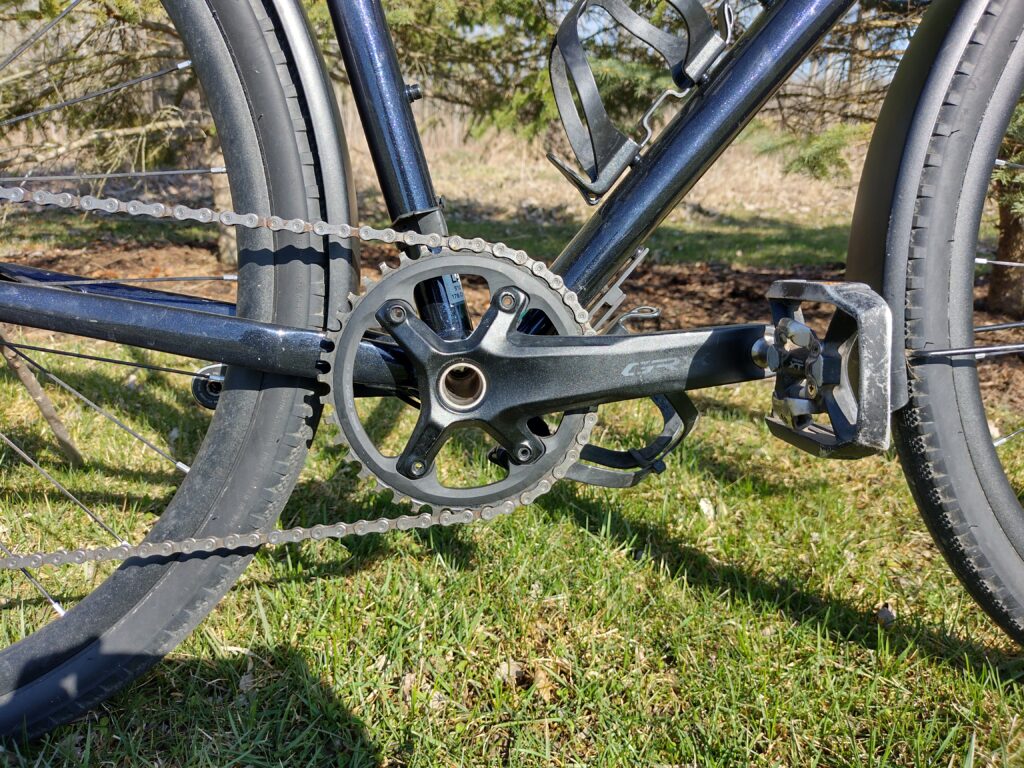
The GRX RD-RX812 rear derailleur is excellent, I have found it to be totally reliable and the addition of a derailleur clutch almost eliminates chain slap against the frame. The feel of the shifters is also excellent, the GRX hoods are taller than pure road bike models which locks your hands in better on technical descents, and the ergonomics of the levers are spot on. The reach of the levers can also be adjusted to suit any hand size or riding position. I like the GRX groupset very much, its only slight con is that the aftermarket chainring size is limited to 36 teeth due to the bolt pattern of the crankset. A direct-mount GRX groupset, perhaps available in 12-speed, would be an excellent upgrade to the system.
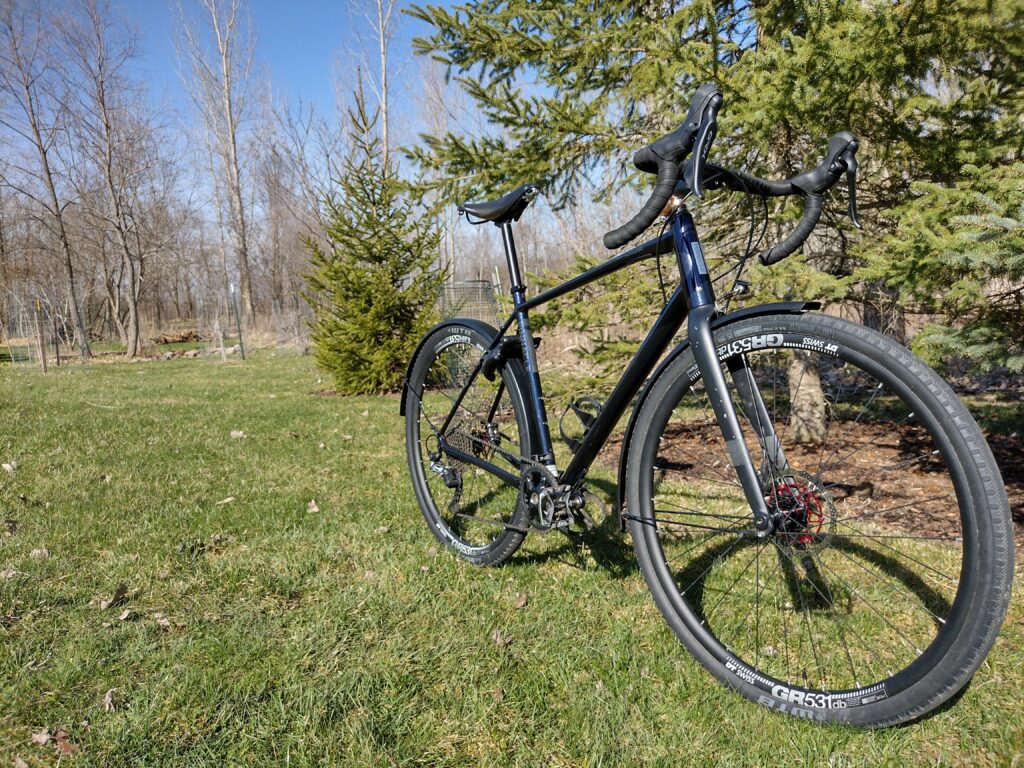
Braking comes courtesy of Shimano GRX BR-RX400 2-caliper pistons which work pretty well, but due to the flat-mount standard the maximum rotor size is 160mm which limits their effectiveness. The stock rotors were low-end Shimano discs which were not compatible with sintered pads and provided fairly uninspiring braking performance, but I have upgraded them to some red A2Z Teppan Yaki SP5s with sintered pads which have an aluminum carrier for better heat dissipation. The stopping ability of the bike is better now but still not endo-inducing as I was hoping for, however it is probably as good as it’s going to get given the limits imposed by the bike’s geometry and the mountaing standard.
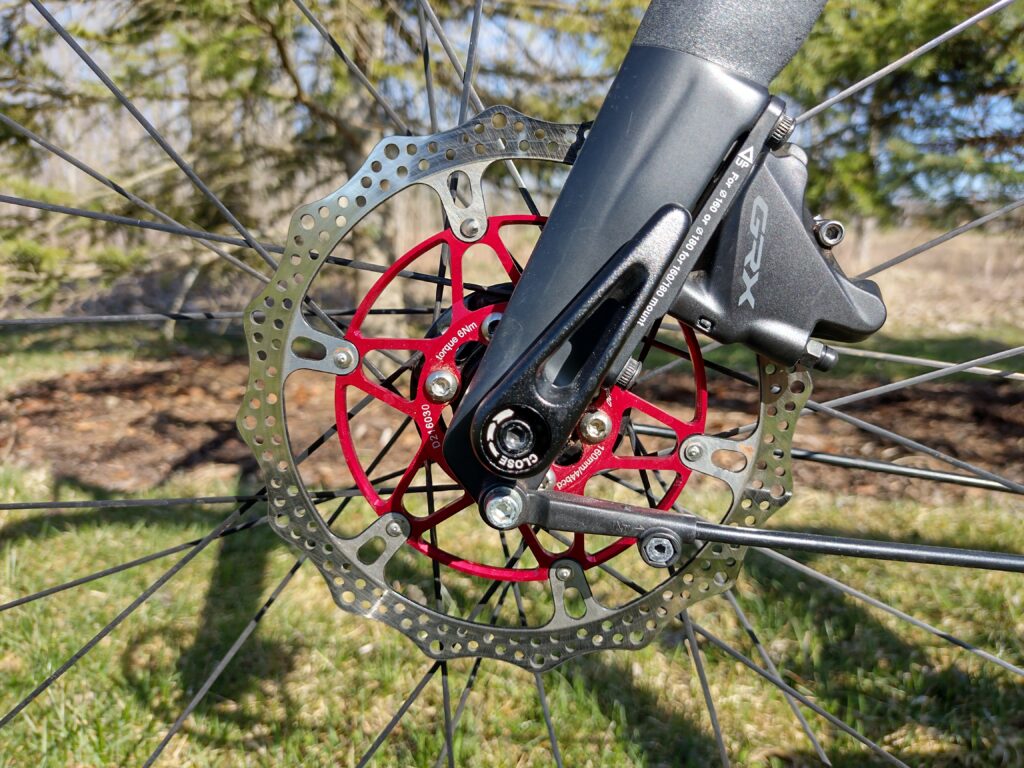
The original WTB Speedterra wheelset was surprisingly good but I ended up upgrading to a set of Gravel Bomber wheels built by RyanBuildsWheels. I originally bought this wheelset for my Fairlight Faran 2.0 touring bike before I was confident enough to build my own wheels, and although it is a good wheelset the original WTB wheels were light and had very nice hub engagement so I don’t think it was really necessary to upgrade them. The WTB Byway tires have a smooth central strip which I like for riding on roads where there is a chance of going off-piste, and I also think a tire size in the region of 45mm is also a very good compromise between on and off-road performance as well as comfort.
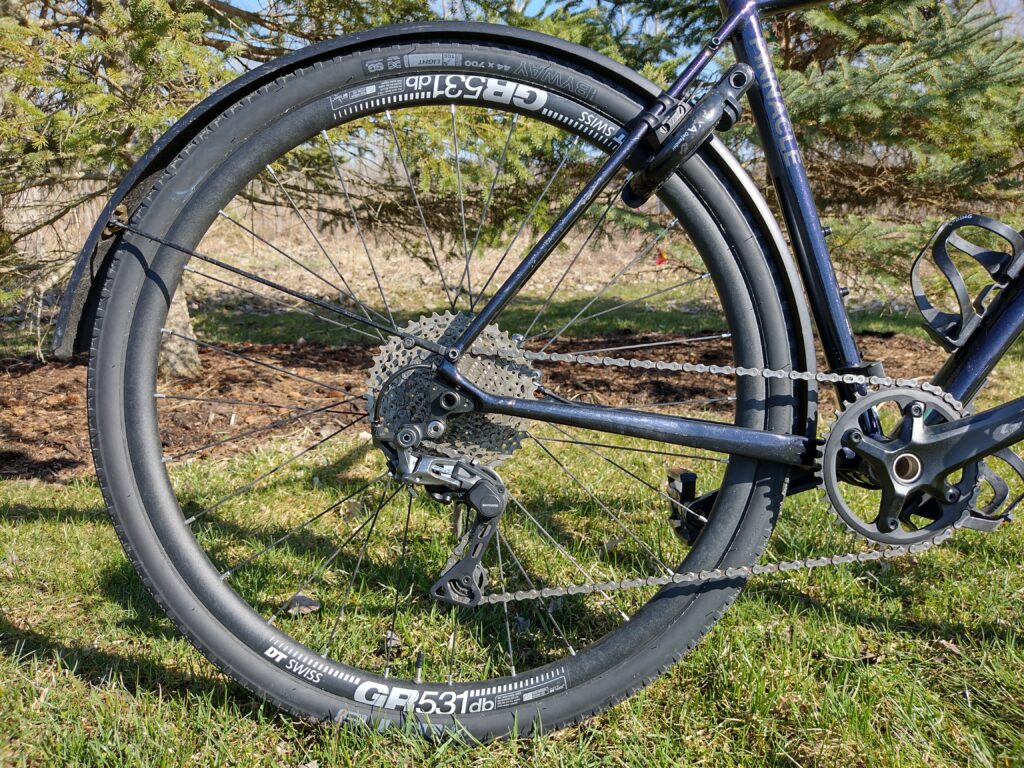
I have made a few other changes to the bike, most notably the addition of a black Brooks B17 leather saddle, an Axa Defender ring lock, and a set of SKS Edge AL 56 mudguards. The Brooks B17 is excellent but after breaking a tensiuon pin I am no longer confident in its long-term durability, and there are also obvious issues associated with the use of leather – although the typically oil-derived alternatives also come with their own ethical dilemnas. The Axa Defender is good but bulky, so I have elected to try an Abus 5650 on my Fairlight Faran because of its slimmer design – the operation of the two locks is identical, though. And finally the SKS Edge AL mudguards are well-built, wide enough for 44mm tires, and good looking but they do allow some water to splash out from the sides so they may not be the best choice for continuous cycling in the rain.
I have also added a Crane Mini Suzu headset-spacer mounted bell to the bike. This bell is made of copper-plated brass which is not only beautiful but also gives it a wonderful tone as well as incredible sustain. Its only drawback is that it is almost too loud!
The 2021 Pinnacle Arkose 4 cost me £1,500 ($1,965) in March 2021 which seems expensive but represents pretty good value compared to the competition, especially considering the supply chain squeezes that were happening at the time. However, as I’m writing this article in April 2022 the current Arkose 4, which is 100% identical to the 2021 model, costs a whopping £2,150 ($2,800), which is quite frankly way too much. I am not completely up to speed on all of Pinnacle’s competitors but the similarly-specced Nukeproof Digger Factory can be had for £1,800 ($2,360), for example. Evans does offer regular sales though so it is still definitely worth considering if the price is right, especially given the excellent geometry, but at its retail cost I would probably take my money elsewhere.
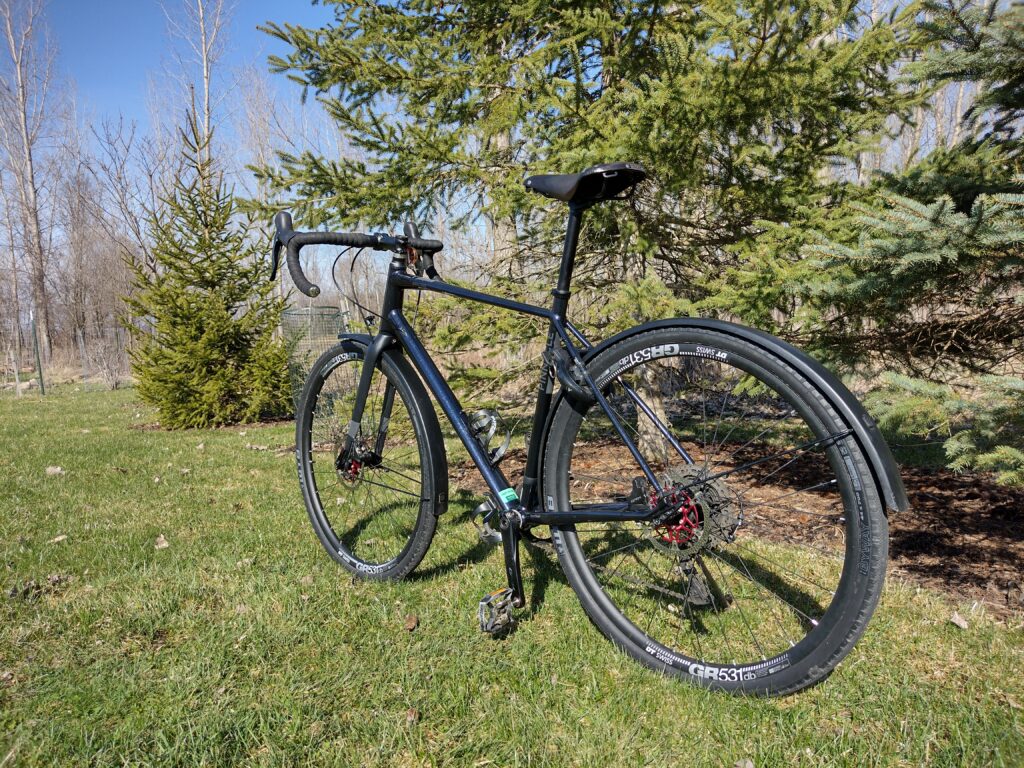
As a gravel bike the Pinnacle Arkose 4 works pretty well in most situations. It is an excellent commuter or around-town bike and does well riding on mixed surfaces and on mild mountain bike terrain but it isn’t really designed for technical off-roading the way a mountain bike is. It is also pretty quick on pavement but nothing compared to a real road bike. It is possible to go bikepacking with this bike and while I have used the old version of the Arkose for touring this is not ideal because the carbon fork means that it is not possible to mount a front rack on this bike.
Overall I really, really like this bike. It is probably the best feeling bike I have ever owned, a large part of which is certainly down to the way it fits me, but it feels very snappy, handles well, and can deal with most types of terrain and riding situations you can throw at it. It’s so good that I can’t think of any drawbacks aside from the technical limitations of the GRX groupset and the disc brake mounting standard. A true home run by Pinnacle.